Ascension Island Expedition — Orkney
Posted by AbyssWriter on 6/03/07 • Categorized as Archaeology,Ascension Island,Orkney,Scotland
NEWCASTLE-UPON-TYNE, England (Thursday, March 8, 2007) – I need not have worried about the previous night’s storm. When I woke Tuesday morning, the wind that howled outside (and sometimes through) my window was nowhere to be heard. The sun was bright, with scattered clouds.
This was looking good.
After breakfast I caught a taxi (₤4) to the Northlink Ferries port at Scrabster to board passage on the MV Hamnavoe (₤26 round-trip, or return as they call it). A light breeze blew across Pentland Firth, which connects the North Atlantic to the North Sea.
What can I say about the passage? Spectacular? The views of Dunnet Head, the northernmost point on the Scottish mainland, and of Hoy and Flotta, islands on the southwest portion of Orkney were, well, spectacular. I got a good look at what is arguably Hoy’s most famous resident, the Old Man of Hoy, a stone pillar that rises dozens of feet above the North Atlantic waves that crash into the base of it. I also saw what looked like a waterfall that dropped off the southwest portion of Hoy into the sea far below.
After about an hour at sea, the Hamnavoe steered east into Scapa Flow, and soon pulled into its berth at Stromness, on the southwest coast of Mainland, Orkney’s largest Island.
DARLINGTON, England (Thursday, March 8, 2007) – I wish I could say a lot about Stromness, but I was there just long enough to catch a ride elsewhere. I had originally hoped to see Scara Brae, the Neolithic settlement site, but bus access was limited, thus I selected plan B. I bought a one-day Orkney Rover pass (₤6), which would allow me to get on and off as I wished) and headed for my first stop, Stenness.
Near Stenness are three World Heritage sites, the Standing Stones of Stenness, the Ring of Brodgar, and Maes Howe. I walked up a road to the Standing Stones, a stone circle with a few giant stones that still stand. It dates to about 5,000 BP (before present).

The Ring of Brodgar, with the Loch of Harray in the background. (Copyright © 2007 David M. Lawrence)
Then I walked up to the Ring of Brodgar, about a mile away. On the way, I was accosted by a border collie and a black lab with muddy paws – who christened my formerly clean jeans. (Of course, I did NOTHING to encourage their visit.)
I cannot think of an adjective that adequately describes the Ring of Brodgar (4,000-4,500 BP). Amazing seems rather weak. Nearly 30 large stones remain, as well as a moat that surrounds the ring of stones, a few large cairns and other structures, such as several outlying mounds connected to the Ring itself by several well-worn paths.
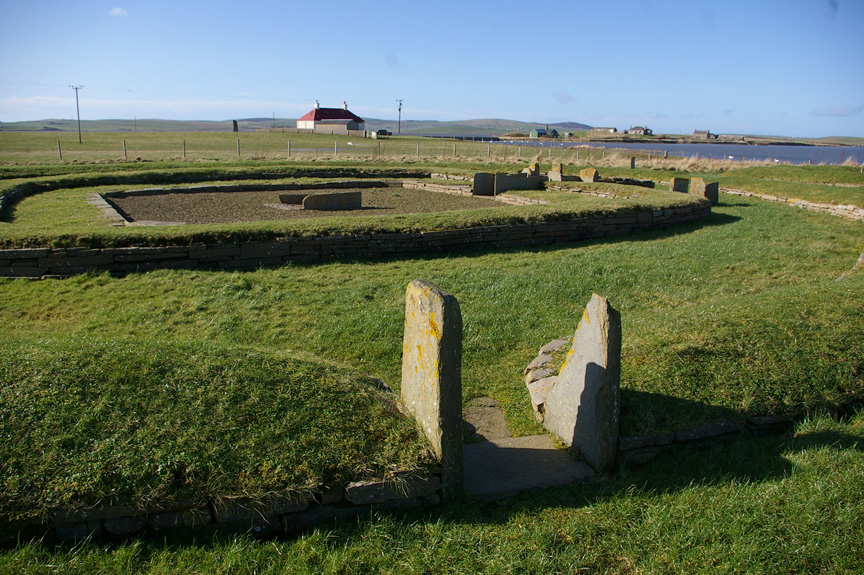
The door still offers an invitation inside the Barnhouse Settlement. (Copyright © 2007 David M. Lawrence)
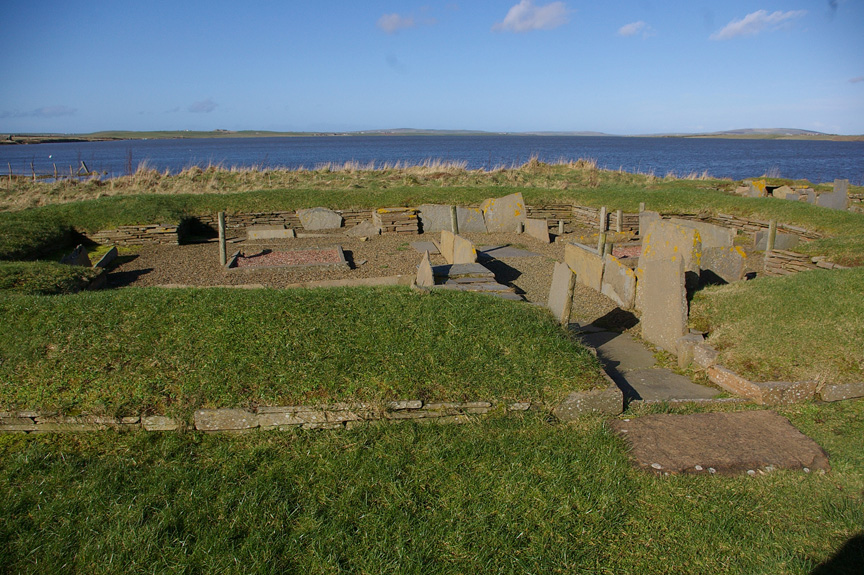
The Barnhouse Settlement is a mix of residential and ceremonial dwellings. (Copyright © 2007 David M. Lawrence)
On the way back to the main road between Stenness and Kirkwall I decided to stop by another site indicated by a sign on the road next to the Stones of Stenness – the Barnhouse Neolithic village. It dates to more than 5,000 BP. The settlement has been partially reconstructed. The highlight is a large building that may have been a ceremonial center. One large residence and several small ones are also there.

The Barnhouse Settlement featured the latest Stone Age furniture. (Copyright © 2007 David M. Lawrence)
I was still tired and sore after my experience walking from Wick to Noss Head the day before, so I decided to try a shortcut to Maeshowe, a burial mound about a mile or more away. My shortcut consisted of walking along Loch Harray. It was NOT a good idea, but once committed, I persisted in my error. Most of the walking was slow, but uneventful, at least until I reached ditches I had to cross. One I had to jump. My right foot sank into the mud at the far edge and I ended up landing on my face on the other side. Too bad no one was there to capture the moment in videotape.

Unfortunately, I did not have time to explore the burial mound, Maeshowe. (Copyright © 2007 David M. Lawrence)
Eventually I reached a point where I could neither realistically go on, nor return, so I cut into a farm field and headed for a churchyard surrounded by a stone wall. There was only one way across the wall – up and over – but I could not have climbed it myself. Fortunately there was a trough of water for the sheep. With a little help from someone else’s concrete, and with my apologies to the permanent (and deceased) members of the churchyard, I made my way back to the main road an on to Maes Howe visitor’s center.
Rather than wait for the guided tour to the tomb, I decided to wait for the bus and write a couple of postcards (puffins for my son, Malcolm, and a seal for my daughter, Mei).
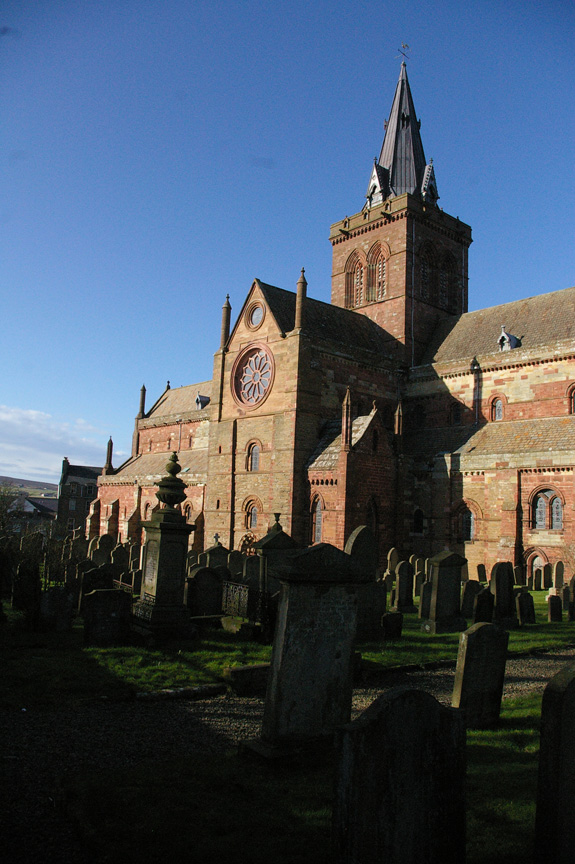
The spectacular Romanesque architecture of St. Magnus Cathedral rises above Kirkwall. (Copyright © 2007 David M. Lawrence)
YORK, England (Thursday, March 8, 2007) – I did not have a lot of time to spend in Kirkwall, the main city in Orkney, but I made the most of what time I had. Near the bus stop was St. Magnus Cathedral, a eleventh century structure that is majestic both inside and out. The cathedral was open, so I walked up and down the aisles, taking not nearly enough photos of its magnificent interior. A couple of men were either rehearsing or working on the gorgeous organ in the center.

A model of a Viking longship graces the altar in the sanctuary. (Copyright © 2007 David M. Lawrence)
A model of a Viking longship is berthed upon an altar in the sanctuary, and several centuries of memorials to lost Orcadians adorn the walls. One modern highlight is the bell from HMS Royal Oak, sunk by a German submarine in Scapa Flow in 1939 with more than 800 lives lost.

The bell from the HMS Royal Oak serves as a memorial to the men killed in the 1939 U-boat attack in Scapa Flow. (Copyright © 2007 David M. Lawrence)
Across the street was the Earl of Orkney’s palace, another example of spectacular medieval architecture as well as another spectacular building. I do not know what the other building was but I suspect it may be the bishop’s residence. After visiting the cathedral and Earl’s palace, I went in search of a post office from which to mail my postcards to Malcolm and Mei.
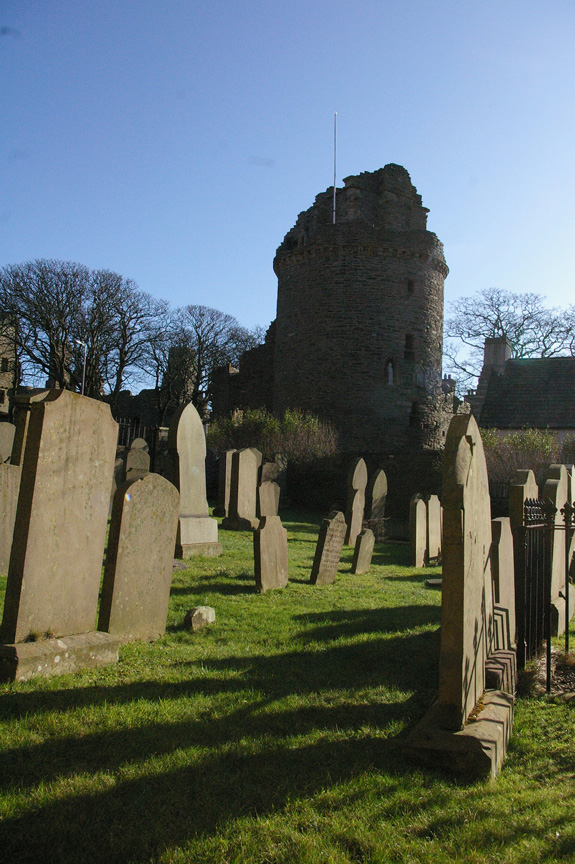
The Bishop's residence looms over St. Magnus Cathedral's cemetery. (Copyright © 2007 David M. Lawrence)
I also found a bakery and bought a meat pie and a drink, and had lunch in front of the cathedral. I used my few remaining minutes to walk around the cathedral’s neighborhood, then took off for the bus stop. I arrived there early, and decided to go across the street to a couple of stores in search of nail clippers with which to trim my claws. No luck.
The bus ride back to Stromness was uneventful, but I had a nice conversation with a young mother and her 10-month old, teething, and intense-looking daughter. Her gray eyes did not miss anything. (Her mother said she often won staring contests.)
The Old Man looked better in the afternoon light, but the overcast to the west kept him somewhat enshrouded in shadow. I still enjoyed the view. As is my habit, I spent the passage outside rather than in, but the wind beat the hell out of me for my trouble.
From Scrabster, I caught a bus (₤1) back to Thurso, and eventually found a grocery store open that had nail clippers as well as a few snack items for what I expected to be a long travel day back south.
While on Orkney, my wife, Alison, called to tell me about a possible strike by railroad signalmen later in the week. The strike would affect my travel plans if it happened, as I was planning to do it all by rail. But I could learn nothing of the impending strike in Thurso.
Leave a Response
You must be logged in to post a comment.

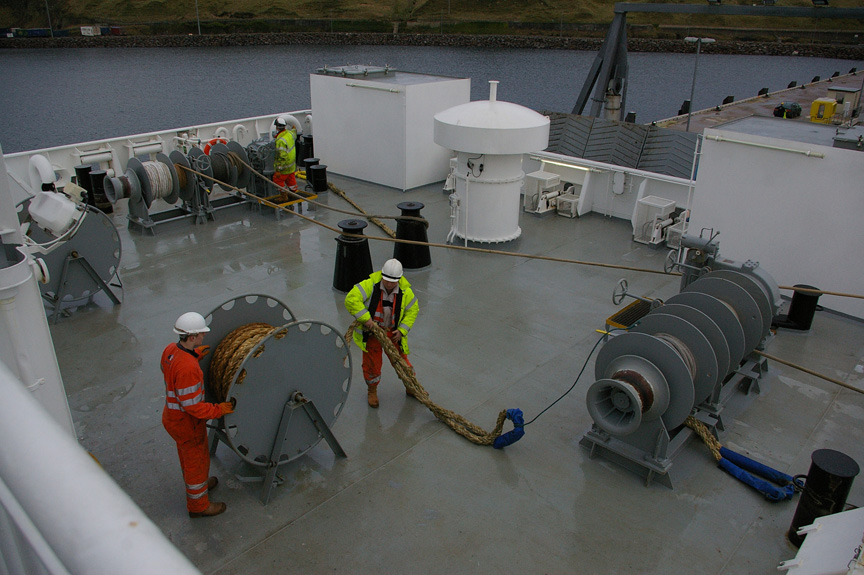
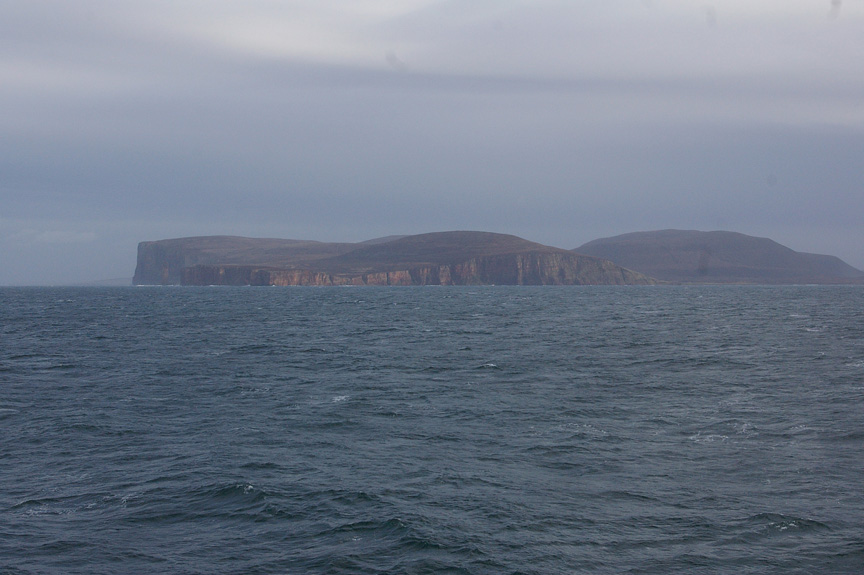
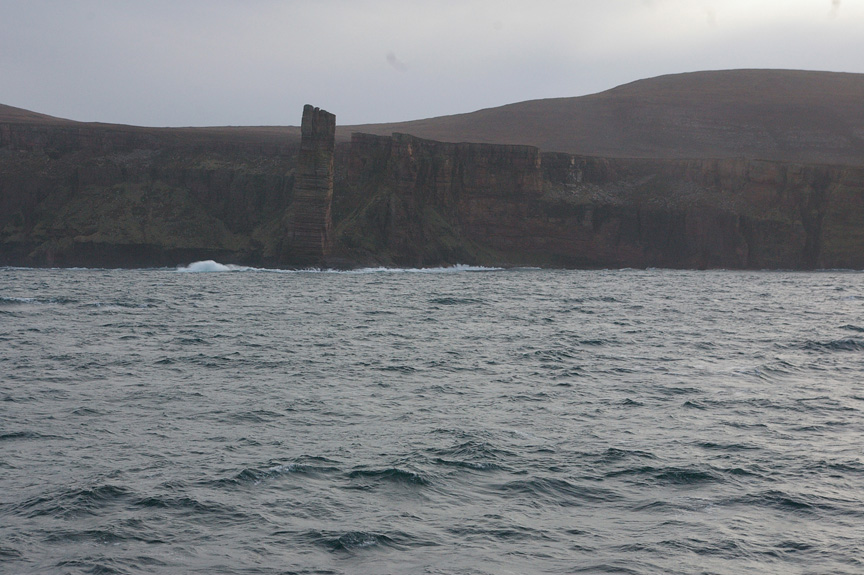
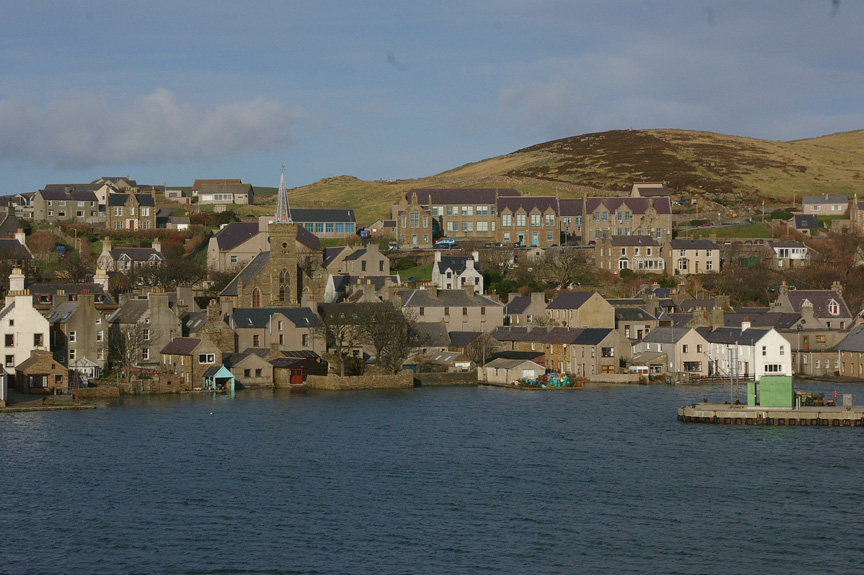
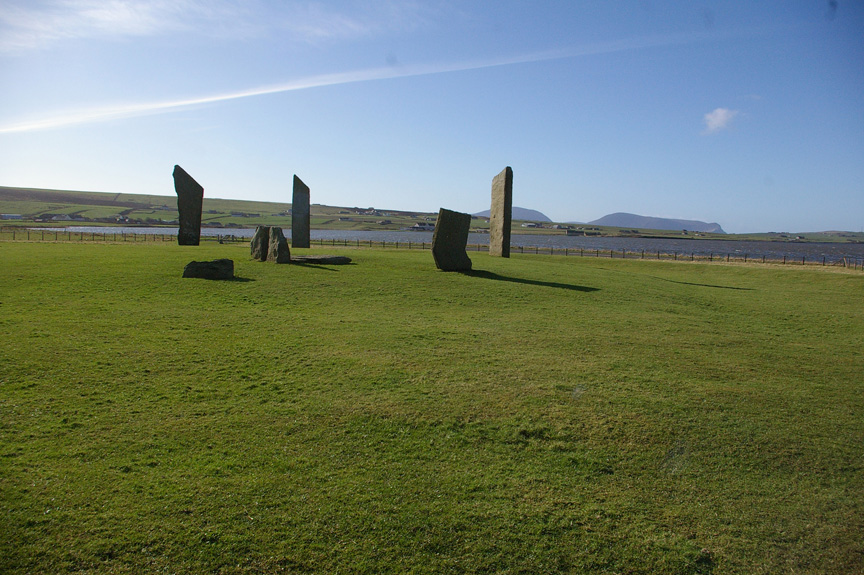
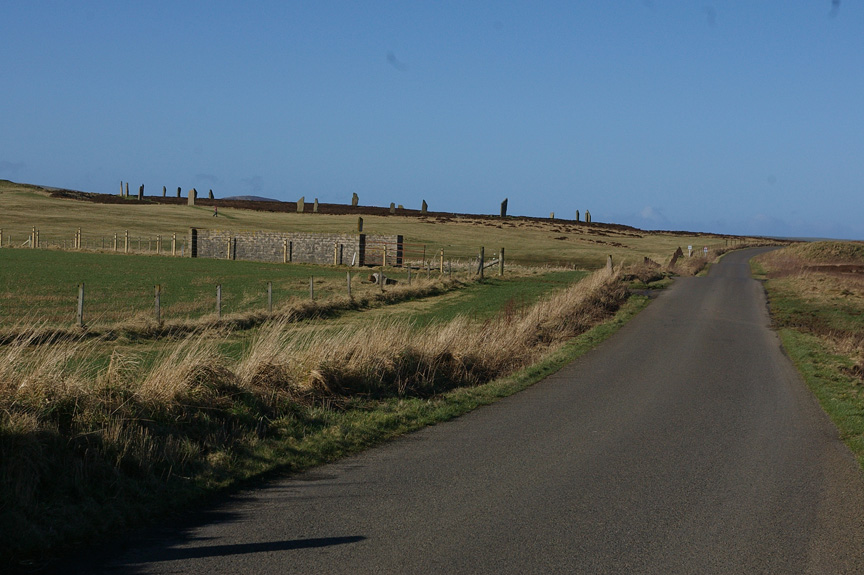
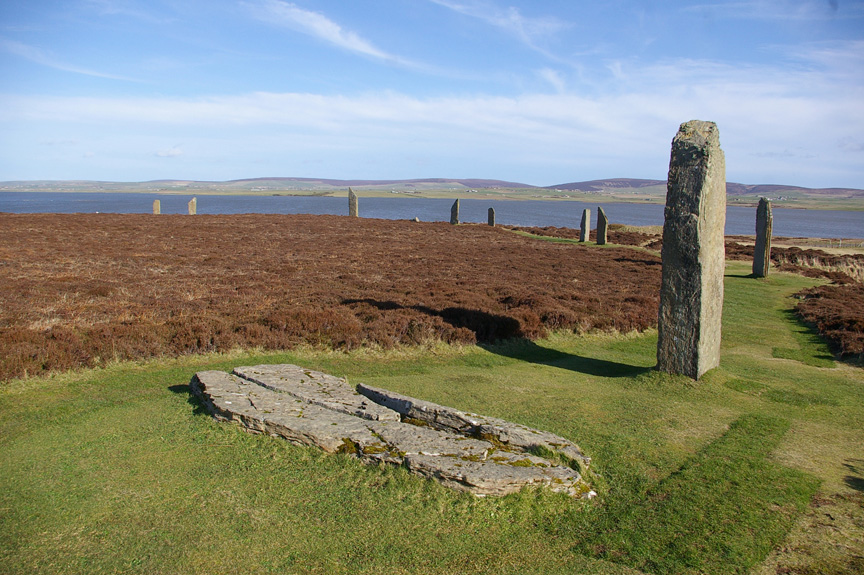


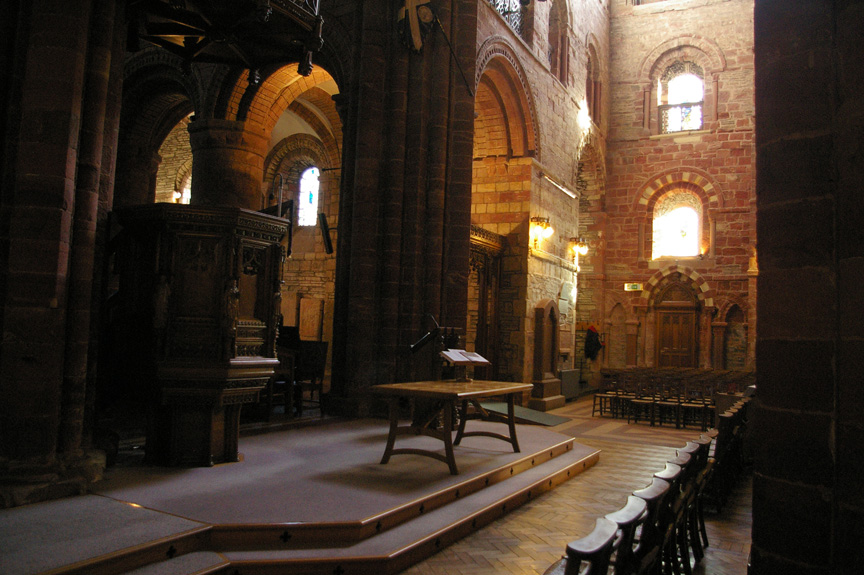
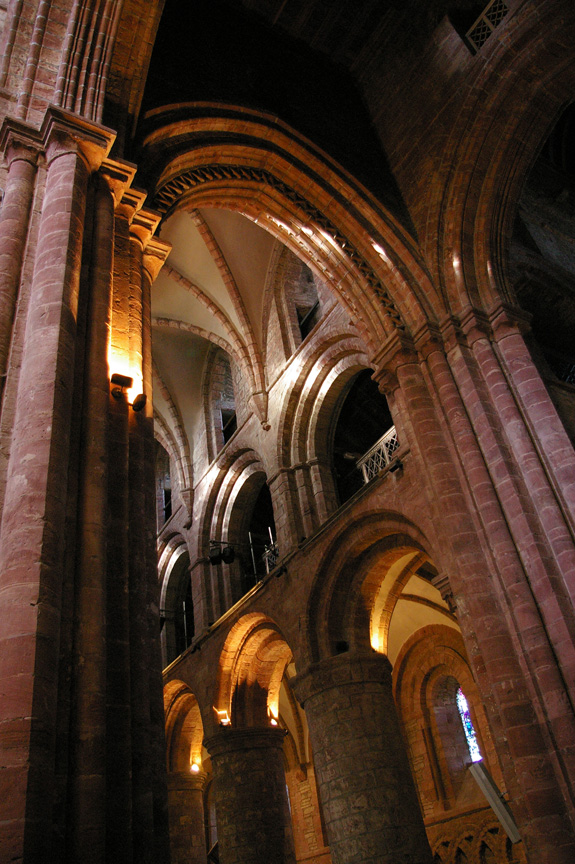
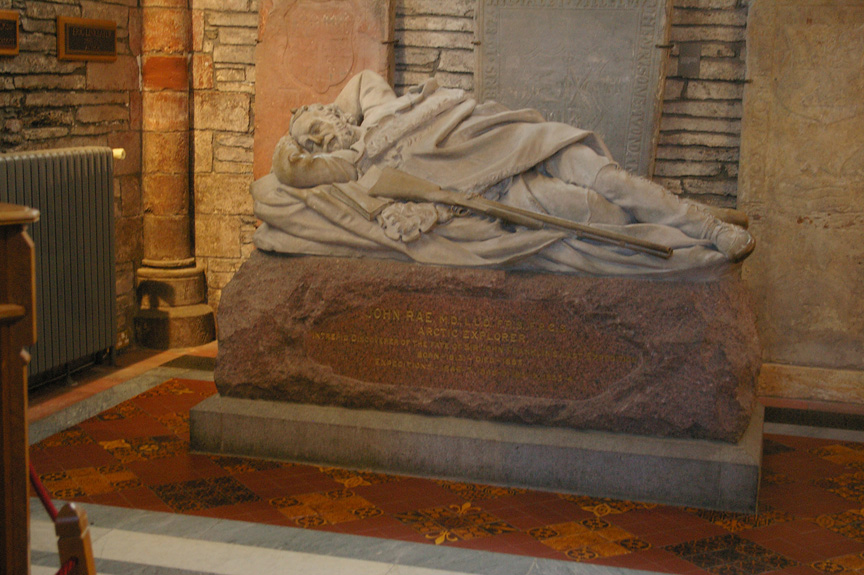
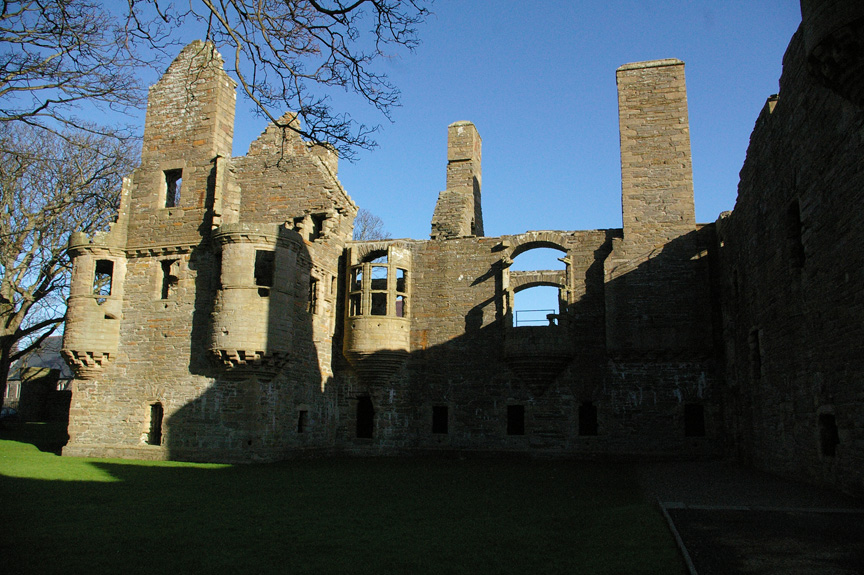
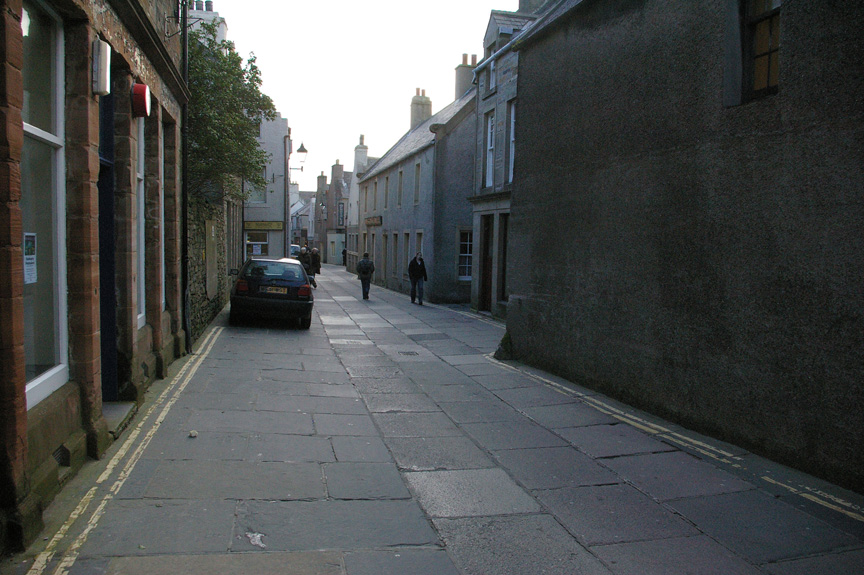
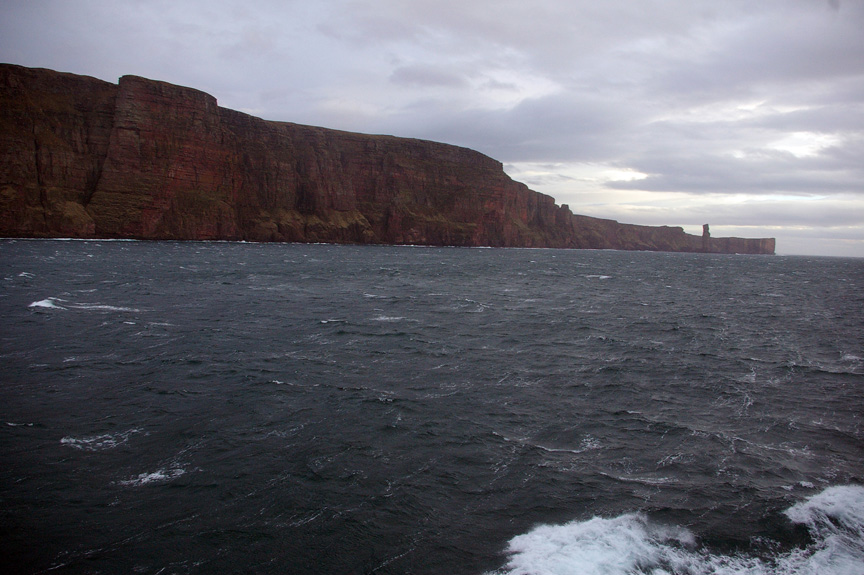

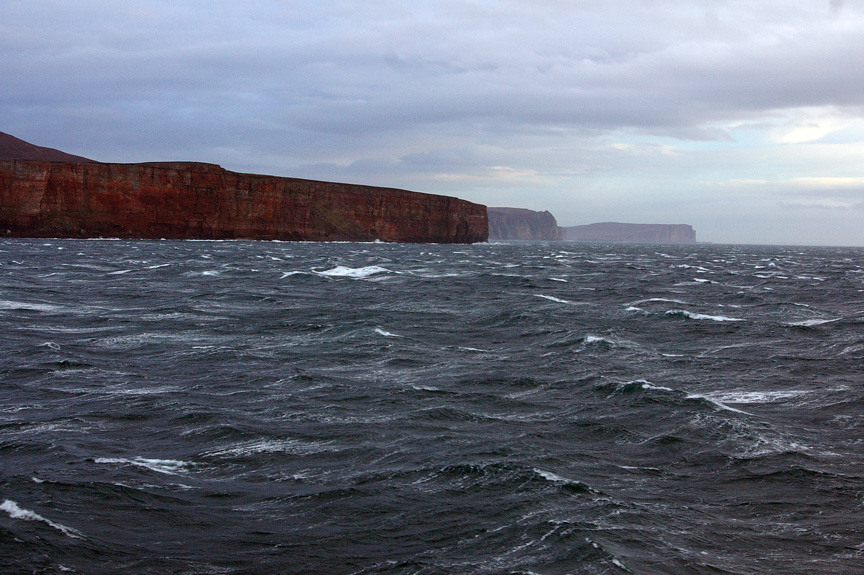
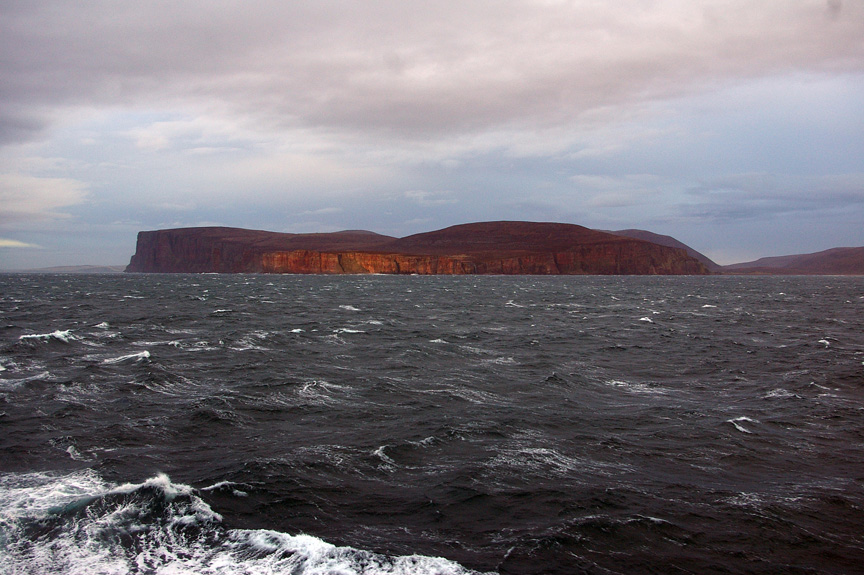



You must be logged in to post a comment.